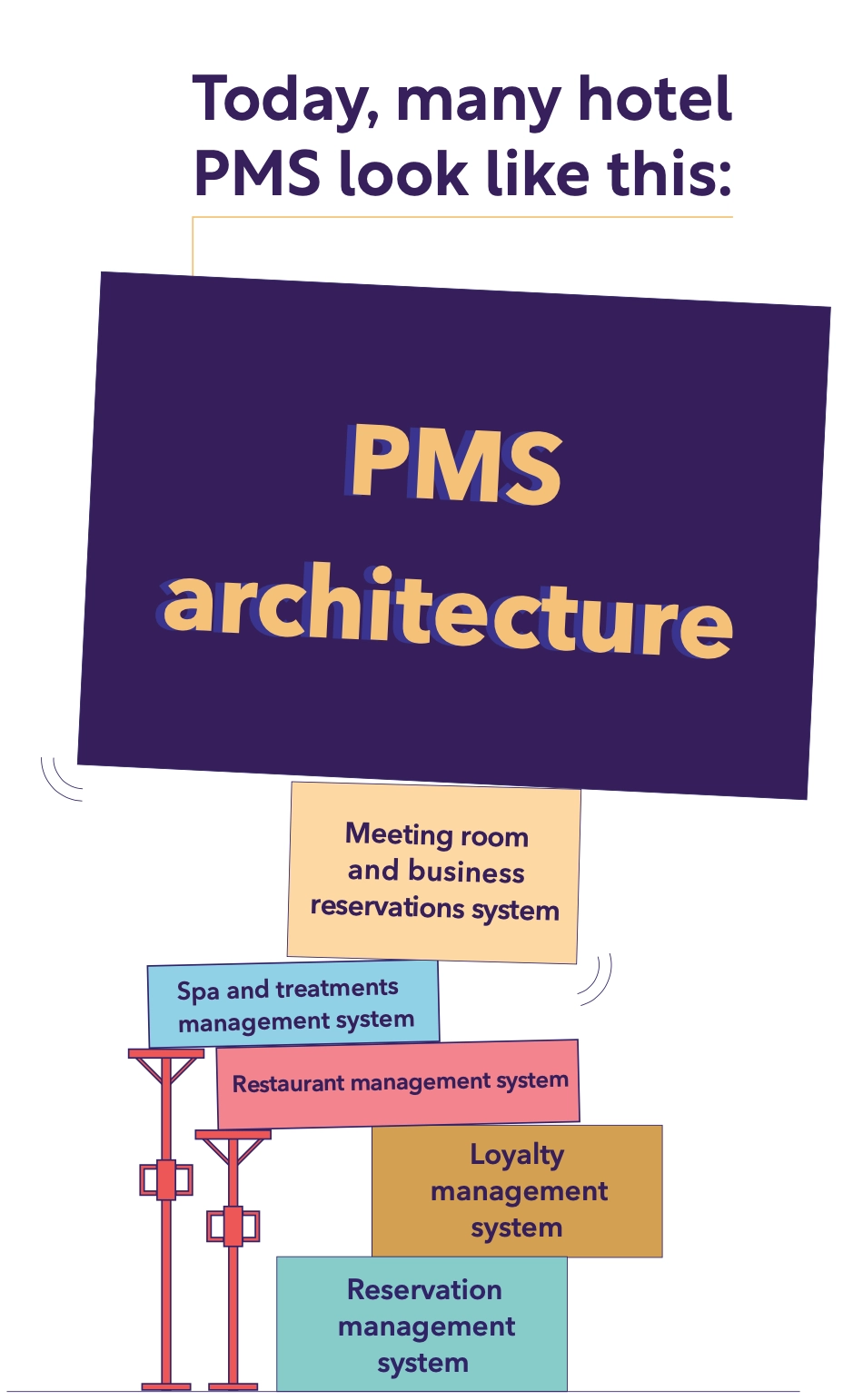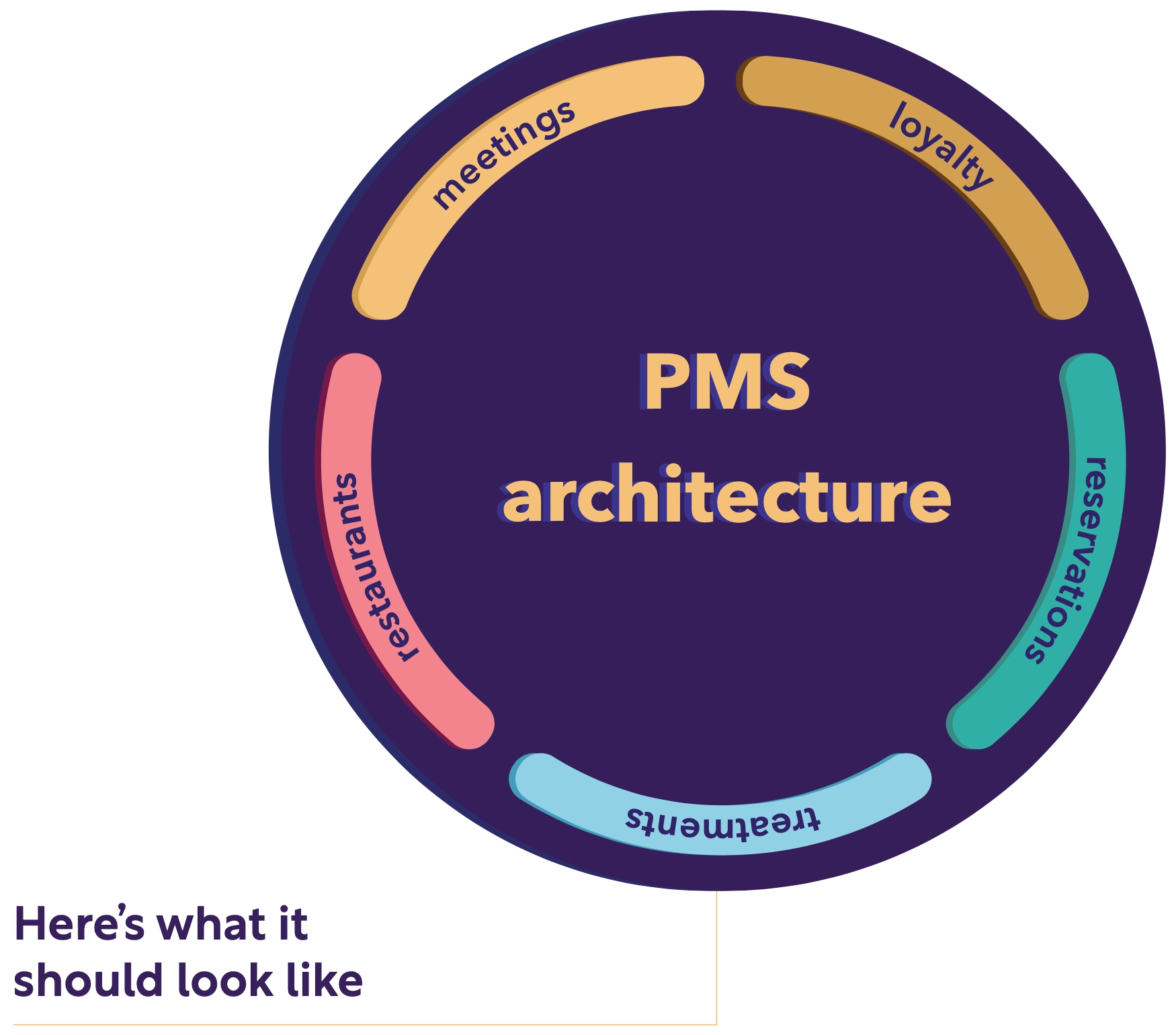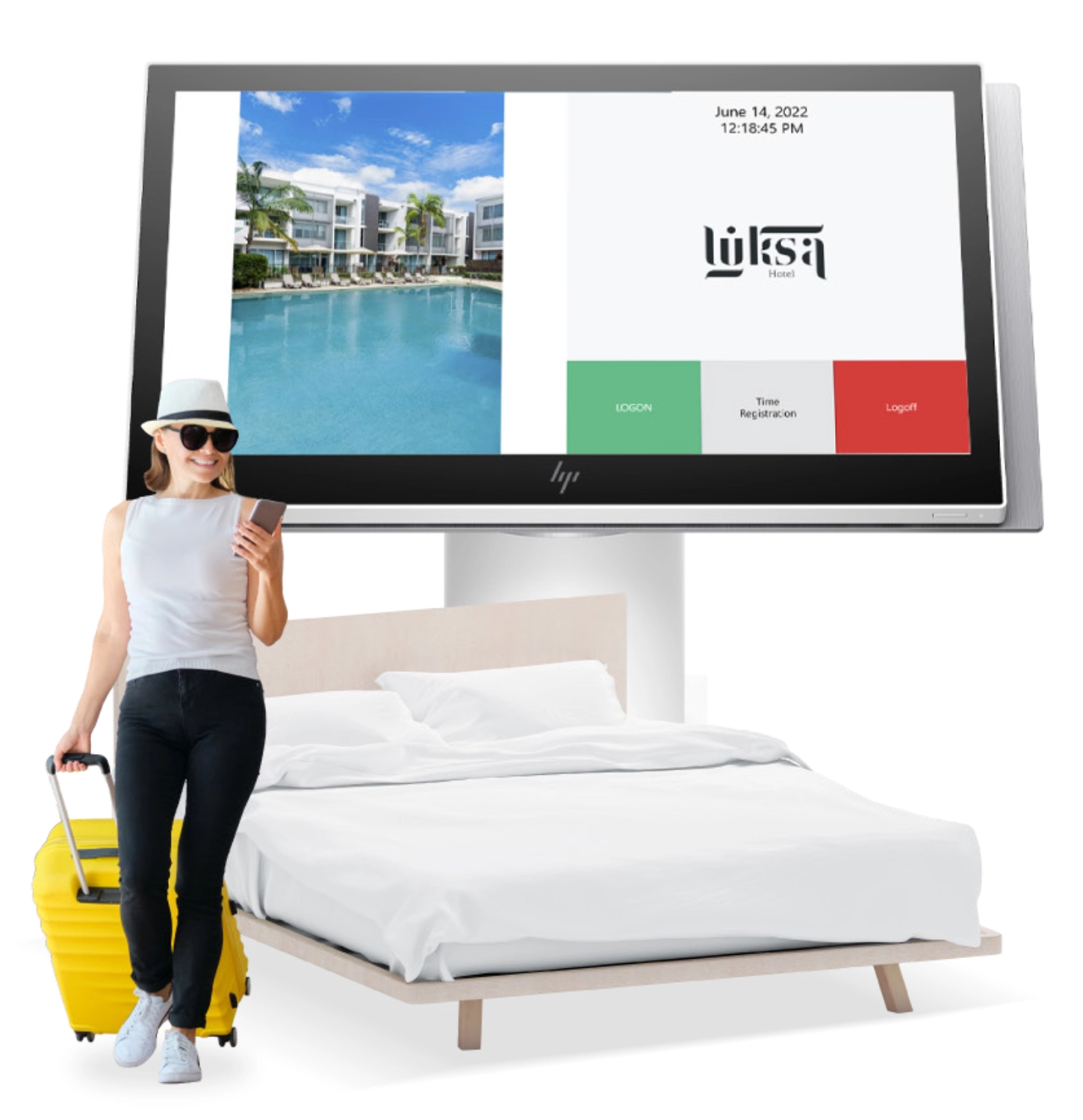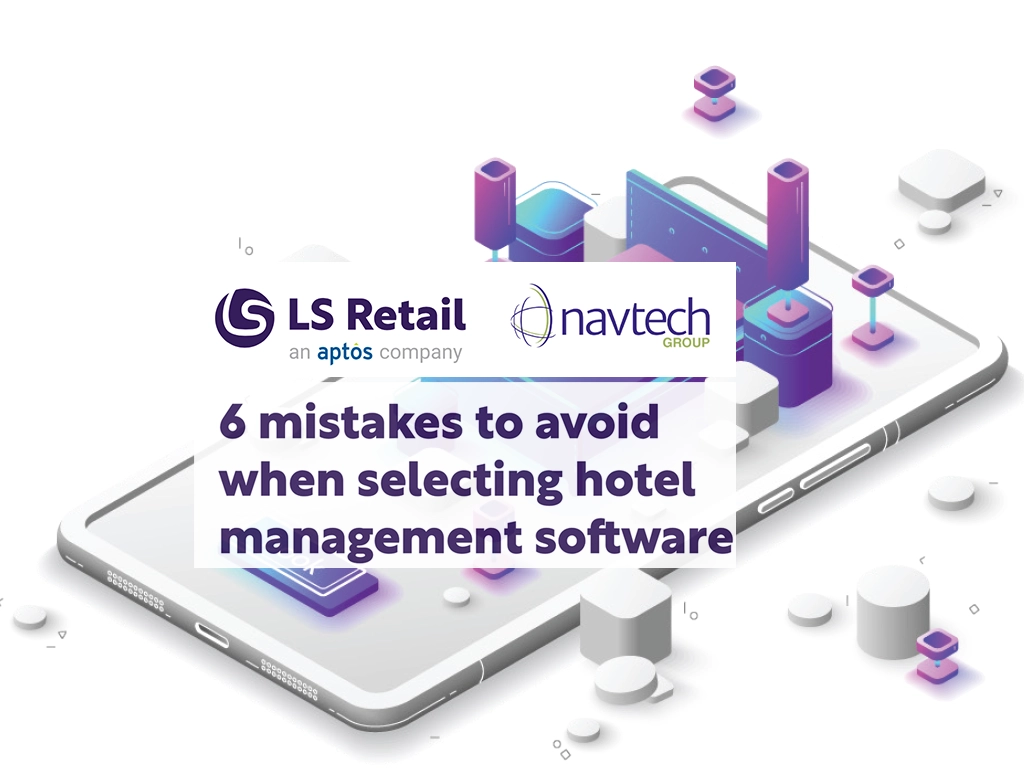6 MISTAKES TO AVOID WHEN SELECTING HOTEL MANAGEMENT SOFTWARE
You’ve decided it’s time to upgrade your hotel management software. It’s a big step, but it is time. After all, you’re unable to distinguish your repeat guests from your newcomers, your property management system (PMS) doesn’t communicate with your POS system, you can’t integrate with online booking engines, and you feel like you have no visibility or control over your business. You know you need to do something about it.
But there are still doubts blocking you.
On the one hand, you know that many software implementation projects fail.
On the other hand, the sheer volume of solutions available is overwhelming. They vary in name and price, but most of them claim to do the same thing. They all say they’re the best. Which one do you choose?
Nick Price, CEO of hospitality IT consulting company NetSys Technology, believes there are at least 30-40 hotel PMSs available globally, and growing. Price told us that in most cases, these systems consist of a loosely connected constellation of applications around a PMS. Superficially, it looks like you’re buying an integrated technology solution to manage your entire business. The reality may be quite different.
So where do you start? How can you ensure that your new IT platform is a business success, rather than a huge costly failure?
This report shares six common pitfalls that hotels face during the business software selection process, and how you can avoid them:
#1 Focusing on short-term goals instead of long-term strategy
#2 Having unclear business objectives
#3 Leaving the selection process to the IT department
#4 Believing you need different pieces of technology to manage different areas of your business
#5 Choosing technology that won’t scale with your business
#6 Selecting a complex solution that requires lengthy and costly staff training

Please, follow our next post to see all 6 steps to avoid mistakes when selecting hotel management software.
Mistake #1
Focusing on short-term goals instead of long-term strategy
How do you perceive your IT? Is it a short-term expense, or a long- term investment?

Hotel managers reported to Hospitality Upgrade Magazine that their firms tend to focus on technology only when it doesn’t work or when circumstances demand immediate attention. “Rather than considering the specific task or tasks at hand, management would be wise to deal with overall objectives, lifecycle costs and technology benchmarks,” the article said. “This can be accomplished through budgetary inclusion of IT.”
Unfortunately, many hotels don’t invest enough in their IT for it to truly benefit their business. “While many hospitality companies report spending 1-3% of revenues on technology, a shift of 3-5% helps ensure continuous operations and reinvestment funds as needs arise,” Hospitality Upgrade Magazine said. “This is similar to financial planning for unexpected – but predictable – expenses related to the property’s roof, carpeting, furnishings, swimming pool or golf course.”
An article by Hotel Tech Report titled “This is why hotel brands shouldn't build tech in house” draws the analogy between maintaining software and maintaining a hotel: “Every hotelier knows what happens when you let a property go too long without renovation and the same happens when software isn’t maintained properly.”
Spend wisely and reap the rewards
While many hotel businesses choose to get by with their current IT because they’re reluctant to invest more money into it, this inertia could be costing their business more than they realize.
Indeed, you might be spending more money and time on IT maintenance and repairs than it would cost to make the transition to a modern hotel system.
“With a little information and simple understanding of the operations of the technology you have in your hotel, you could save a huge amount,” a report by Hotel Tech Live said. “You should never compromise on top quality performance, it’s not a risk worth taking. Even the smallest of hotels need some form of technology and management system for a smooth operation and to increase the guest experience.”
It’s time to put aside sufficient budgeting and future-proof your business. Like a hotel that’s been left for many years without any room renovations, your customers will quickly tell when you’re not investing in your business tech.
Mistake #2
Having unclear business objectives
While it helps to be open minded about how a new system can benefit your business, it still pays off to have a clear idea of what you want it to achieve. Unclear business objectives usually lead to uncertain project outcomes.
The last thing you want to do is end up opting for a technology solution that provides limited functionality, doesn’t support your business goals, and holds you back in the long run.
That’s why it’s important to lay out your project specifications in the early stages of planning. This requires having a good understanding of your business and its future needs. In many cases where IT projects fail or miss deadlines, managers and executives have been unclear on the scope of the project to begin with, thereby leaving developers unsure of what features are needed, and how they will be used.
Jordan Hollander, CEO and co-founder of specialized industry publication Hotel Tech Report, urged hotel companies to stop thinking you need to build technology in-house in order to meet your goals. “Historically, hotel brands have been very weak when it comes to technology procurement and management so many have tried to compensate for that weakness by building tech products in house,” Hollander said. “Unfortunately, this strategy often leads to write-offs, burning piles of cash and consequently the executives who lead these disastrous projects being pushed out.”

Use change as an opportunity
While technology can help you run your business more efficiently, it won’t fix bad processes. Before even considering what you want your new system to do, then, take the time to look at your existing business functions and evaluate them. Are they outdated? Could they be simplified? Once you’ve analyzed and mapped out your organization in this way, you’ll have a much clearer idea of what exactly you need your new system to do and how it can handle your requirements.
Here are some simple steps to take:
• Startinternally,andgatherrequirementsacrossyourorganization. It’s worth appointing a project manager who can ensure the implementation doesn’t become disjointed and ambiguous.
• Determineyourcorporategoals,objectives/metricsandstrategic imperatives.
• Reviewyourbusinessrequirementsandlistthechallengesthat prevent you from meeting your objectives.
-
Developaninternalcompanyvisionandscopedocument,which sets out how a new system can help you achieve your objectives.
-
Identify and separate your items into “must haves”, “want-to
haves” and “wish list”, and prioritize the mission-critical items.
Mistake #3
Leaving the selection process to the IT department
It’s a problem that occurs time and again. The management team have signed off a new IT project but they don’t want it to take up too much of their time, so before it’s even started they’ve handed it over to the IT department. Unsurprisingly, when the project is finalized, it doesn’t meet all the business objectives.

While it’s not easy to quantify the costs of managerial apathy, the last thing you want is to end up with an IT system that doesn’t achieve what you wanted it to – both from a business and an IT perspective.
Hospitality Upgrade magazine says that incongruity and failure are common consequences when management does not take part in project planning, installation and/or implementation for a new system or system upgrade.
“Industry experts emphasized the need for top management to demonstrate interest and support in technology applications for there to be an effective implementation,” the article said. “Lack of administrative commitment can become contagious and will ultimately trickle down and produce widespread indifference and improper system utilization.”
Set realistic expectations from the start
The problem most hotel organizations face is that they don’t realize how long a project will take or how much it will cost, which quickly leads to managers losing interest or, worse, threatening to pull the entire project altogether.
That’s why management needs to be involved from the start, and throughout the project, to help determine their business’s needs, select the right system, handle the contract negotiation, oversee the system installation and carry out persistent operational monitoring. If they can see what’s going on and can drive at least some of the process, they’re more likely to have realistic expectations and be strong advocates of the new system once it is up and running.
It’s worth noting that project requirements and scope can change partway through a project, so whoever will ultimately sign off should be actively involved in planning and execution, too.
Mistake #4
Believing you need different pieces of technology to manage different areas of your business
“Have you ever stayed here before?” According to hospitality expert Nick Price, this is one of the most frustrating questions for regular guests. They’ve booked with you many times in the past, but you’re still unable to recognize them as a repeat customer and give them the personal service they expect.
Usually, this is because your systems are unable to communicate with each other.
“What you have is a very loosely and poorly connected set of systems that keep customer information and inventory separately. Really, all they do is pass summary financial information through to the hotel PMS,” Price said.
While you can use poor integration as an excuse with your existing IT, don’t make the mistake of investing in another solution that will leave you in the same situation. Hotel businesses are complex operations, but that doesn’t mean you need separate solutions to manage each department and business function.

Choose a holistic solution
“All-in-one and one-stop solutions are the future,” said one of the panelists at a HITEC Europe roundtable. “Best of breed is dead! Hospitality technology is changing from transaction-oriented solutions gathering silos of information to seamless guest-centric solutions. Eliminating the friction and increasing the guest touch points are the key.”


When looking for a new technology solution, then, keep your search focused on a unified commerce retail and hospitality platform that packages up all the processes and functionality you need within one system, giving you a complete overview of your operations and your customers. By breaking down data siloes, you can combine insights on your business and your guests, and use them to create a cohesive, personalized experience.
Mistake #5
Choosing technology that won’t scale with your business
“Even in an age of multi-terabyte hard drives and unlimited cloud hosting, managing storage space is still an issue for hotels,” a report by Hotel Tech Live said.

Slow servers and system failures not only cost your business, but damage your reputation too. Today, consumers expect to be able to make an online reservation at any time. If they try to access your website and it’s down, they’re unlikely to wait until you’ve fixed it; they’ll book with one of your competitors. Or, consider the problems that come with slow performing business servers. If your staff are unable to access guest information or it takes ages to check guests in, you’re preventing them from providing a good standard of customer service.
“Unless managed effectively, running out of hosting space can slow productivity to a standstill, effectively putting your entire operation on hold until it’s dealt with” Hotel Tech Live’s article said.
Even the largest most successful businesses can’t afford a system failure. But the reality is, many put themselves in jeopardy with a “let’s- get-by” strategy that consists in plugging new systems into legacy platforms and patched-together server networks that could crash at any moment.
But growth is not just about size. At the moment you may not have a spa or a catering service for events – but you may want to add one in future. How will your system support your plans for growth? Will you need to buy a separate solution to handle these different verticals?
Perhaps you are eyeing expanding your business into new geographies. Will your system support this expansion, or will you have to add “find
a local software vendor and investigate software solutions” to the to- do list?
When choosing a new solution, think about your future plans, and consider all possibilities. The right system will meet your business needs now, and it will also stand up to the test of time. Perhaps you are not planning to host events just yet, but you know that’s something your competitors are doing. One day, you may want to enter this space too. At that point, you will need a solution that can manage meeting room bookings, catering services, perhaps rentals.
When selecting a new system, look for one that will combine all the essential functionality into one platform, and that gives you the flexibility to easily add new functionality, as and when you need it. You do not want to have to worry about complex and costly integrations a few months into having your new system up and running.
Also make sure you investigate the deployment options. Is it available as software as a service (SaaS), that is purely in the cloud? Is it only available on premises? Could it be deployed with a hybrid setup? Ideally, you want the flexibility to host the system in whichever way suits your business best. A reputable vendor should be able to work with you to deliver a system that will grows with your business needs, and that can host your mission-critical data exactly where you want it.
Mistake #6
Selecting a complex solution that requires lengthy and costly staff training
Even once you have your new system up and running, if your staff have a hard time using it (or worse, the system is so complex that they refuse to use it), it could end up being a wasted investment.
“The myth that technology alone will solve problems fails to recognize how it affects and integrates with management, staff and guests,” Hospitality Upgrade said. “Too often the importance of initial training, continuous training and programmatic retraining is not adequately budgeted, and therefore objectives become more difficult to achieve.”
This doesn’t mean that you must spend a lot of time and money in staff training. Rather, take into consideration ease of use of the system right from the start, and make it one of the must-haves during the software selection process.

Look for intuitive interfaces
An intuitive interface could mean that your employees are up and running within minutes of system training. To simplify day-to-day use and new employee training, look for a role-based solution. Your employees will only see the information that is pertinent to their tasks and needs, as defined by their user role and permission level. This means that they won’t have to waste time wading through a plethora of unnecessary options. Instead, they can immediately see the functionality that matters to them.
Another important factor to consider is the number of systems that make up your IT environment. If you select a single system to handle hotel bookings and check-ins, item sales, dining services, spa access, financials and purchasing, you will just need to trains employees once. And then, if you need an employee to move from the front desk to the spa bookings, you can easily shift them – no extra training needed on how to use the software system, no time wasted.
Time for change
Replacing the technology in your hotels requires high involvement and commitment. At the same time, the software solution you choose will significantly impact your business processes and, ultimately, your chain’s success for the next 5-10 years. This is not a decision to take lightly.

While in the process of selecting new software, keep in mind the six selection mistakes outlined in this paper. Use them as a litmus test to select a software system that will support you in the long term, and that will help you run your hotel business flexibility.
Follow this methodical process, and you will significantly increase your probability of project success – where success is determined by being on-time, on-budget, and delivering measureable business value today and in the future.
Stop before you make a costly mistake! Are you confused by the hotel and property management software solutions available on the market? Do you need help to understand what you actually need, and how to work through contradicting business requirements?







